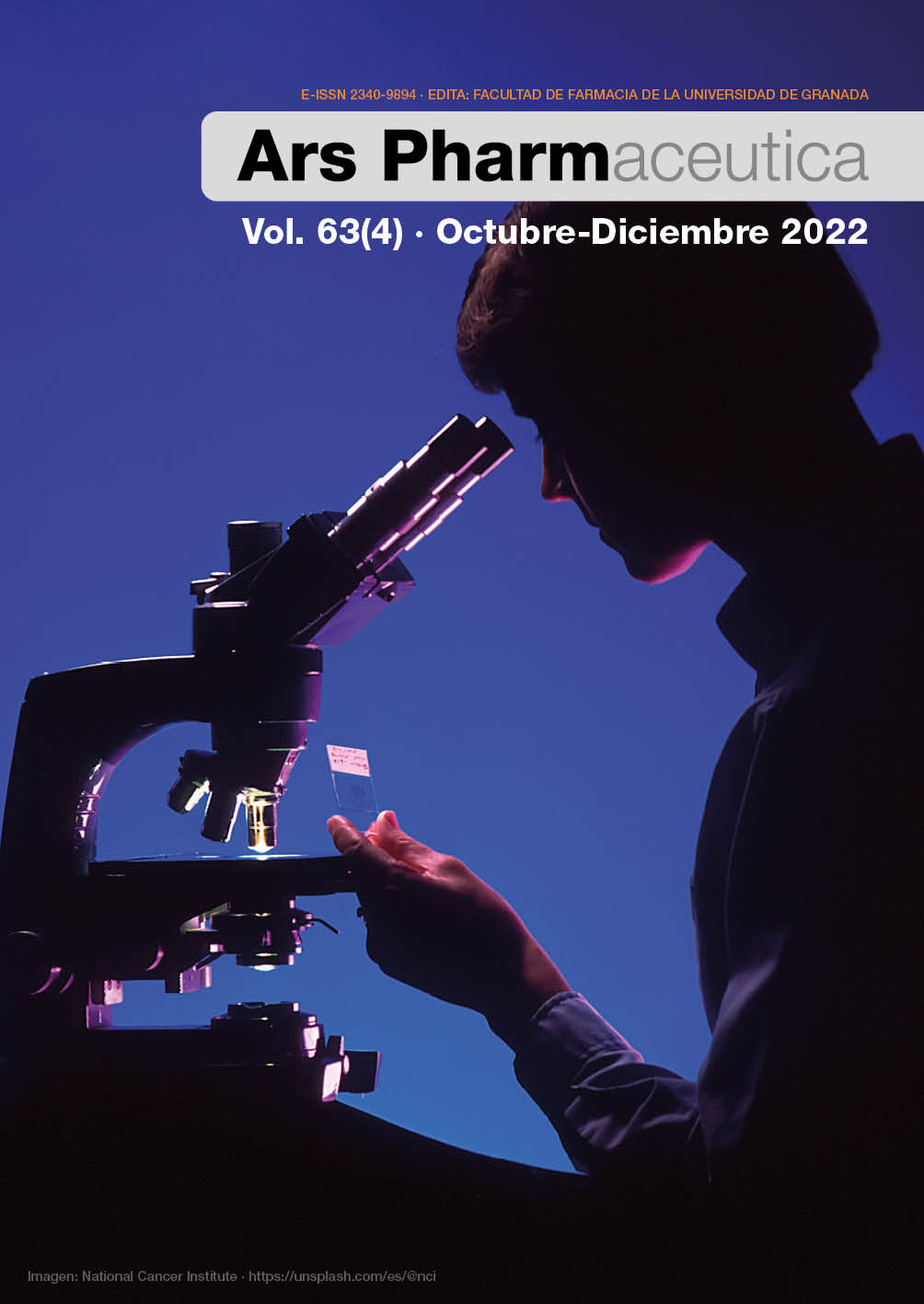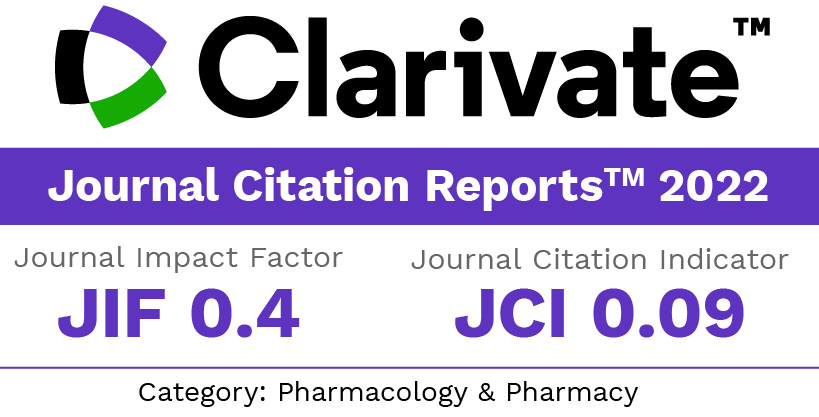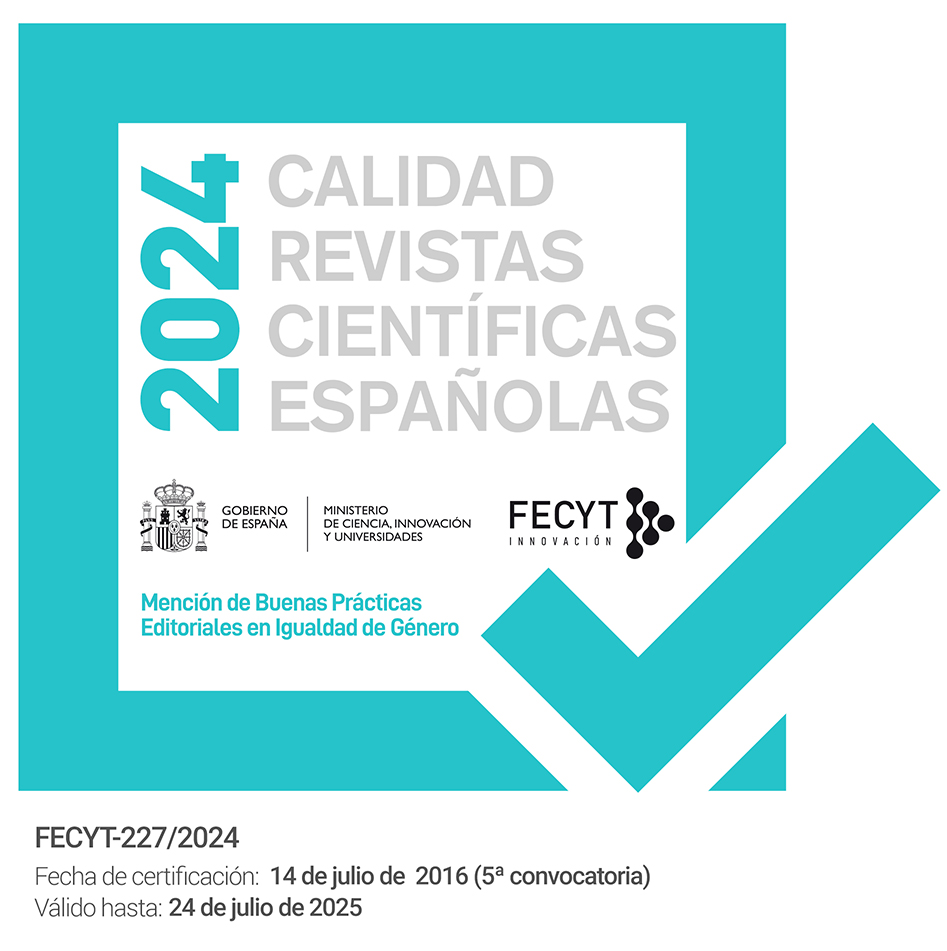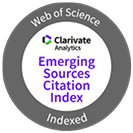Ustekinumab intensification in Crohn’s disease: a systematic review
DOI:
https://doi.org/10.30827/ars.v63i4.24740Keywords:
Ustekinumab; optimization; inflammatory bowel diseaseAbstract
Introduction: Ustekinumab emerges as a therapeutic alternative in Crohn’s disease in patients with anti-TNF failure. However, on many occasions, it is common to have to reduce/shorten their administration times to avoid therapeutic failure. The objective of this systematic review is to evaluate the effectiveness of ustekinumab intensification by shortening its therapeutic interval.
Method: A systematic review of the literature based on the guidelines of the PRISMA statement was performed. The Medline, Embase and Web of Science databases were consulted, including studies with adults diagnosed with moderate or severe Crohn’s disease who had undergone a change in ustekinumab dosage as an intervention by shortening the interval to every 4 weeks.
Results: Five articles were included, one of them being a systematic review. At 6 months, clinical remission rates of around 45% are shown, an average reduction of 3 points in the Harvey Bradshaw index over baseline, as well as a normalization of CRP levels in 21% of patients.
Conclusions: The results support the use of ustekinumab interval shortening as an effective and useful therapeutic option for patients with loss of response to the usual regimen. However, it is recommended to carry out new studies of experimental design that increase the level of existing evidence.
Downloads
References
Kasper D, Fauci A, Hauser S, Longo D, Jameson, J. Larry Loscalzo J. Harrison. Principios de medicina interna. Vol. 2, 19 ed. México D.F: McGRAW HIL, editor.; 2016. 1947-1964 p.
Chaparro M, Garre A, Núñez Ortiz A, Diz-Lois Palomares MT, Rodríguez C, Riestra S, et al. Incidence, Clinical Characteristics and Management of Inflammatory Bowel Disease in Spain: Large-Scale Epidemiological Study. J Clin Med. 2021;10(13):2885. Doi 10.3390/jcm10132885
Srinivasan A, De Cruz P, van Langenberg DR. Ustekinumab dose intensification for loss of response-should we re-induce before shortening the dose interval? Aliment Pharmacol Ther. 2020;52(3):564–5. Doi: 10.1111/apt.15883
Paredes JM, Moreno-Osset E. Manejo práctico de la intensificación del tratamiento biológico en los pacientes con enfermedad inflamatoria intestinal. Enfer Inflamatoria Intest al Día. 2016;15(3):96–103. Doi: 10.1016/j.eii.2016.04.004
Sandborn WJ, Gasink C, Gao LL, Blank MA, Johanns J, Guzzo C, et al. Ustekinumab induction and maintenance therapy in refractory Crohn’s disease. N Engl J Med. 2012;367(16):1519–28. Doi 10.1056/NEJMoa1203572
Dalal RS, Njie C, Marcus J, Gupta S, Allegretti JR. Predictors of Ustekinumab Failure in Crohn’s Disease After Dose Intensification. Inflamm Bowel Dis. 2021;27(8):1294–301. Doi:10.1093/ibd/izaa282
Haider SA, Yadav A, Perry C, Su L, Akanbi O, Kudaravalli P, et al. Ustekinumab dose escalation improves clinical responses in refractory Crohn’s disease. Therap Adv Gastroenterol. 2020;13:1756284820959245. Doi: 10.1177/1756284820959245
Moher D, Liberati A, Tetzlaff J, Altman DG, The PRISMA Group. (2009) Preferred Reporting Items for Systematic Reviews and Meta-Analyses: The PRISMA Statement. PLoS Med 6(6): e1000097. Doi:10.1371/journal.pmed1000097.
Meserve J, Ma C, Dulai PS, Jairath V, Singh S. Effectiveness of Reinduction and/or Dose Escalation of Ustekinumab in Crohn’s Disease: A Systematic Review and Meta-analysis. Clin Gastroenterol Hepatol. 2021;S1542-3565(21)01084-3. Doi: 10.1016/j.cgh.2021.10.002
Von Elm E, Altman DG, Egger M, Pocock SJ, Gøtzsche PC, Vandenbroucke JP. The Strengthening the Reporting of Observational Studies in Epidemiology (STROBE) Statement: Guidelines for Reporting Observational Studies. PLoS Med 2007; 4: e296. Doi: 10.1371/journal.pmed.0040296.
Oxford Centre for Evidence-Based Medicine: Levels of Evidence (March 2009) — Centre for Evidence-Based Medicine (CEBM), University of Oxford [Internet]. [cited August 25, 2022]. Available at: https://www.cebm.ox.ac.uk/resources/levels-of-evidence/oxford-centre-for-evidence-based-medicine-levels-of-evidence-march-2009
Fumery M, Peyrin-Biroulet L, Nancey S, Altwegg R, Gilletta C, Veyrard P, et al. Effectiveness and Safety of Ustekinumab Intensification at 90 mg Every 4 Weeks in Crohn’s Disease: A Multicentre Study. J Crohns Colitis. 2021;15(2):222–7. Doi: 10.1093/ecco-jcc/jjaa177
Kopylov U, Hanzel J, Liefferinckx C, De Marco D, Imperatore N, Plevris N, et al. Effectiveness of dose escalation in Crohn’s disease patients with insufficient response to standard-dose subcutaneous ustekinumab maintenance therapy: A multicentre international cohort study. J Crohns Colitis. January 2020;14:S111–S111. Doi: 10.1093/ecco-jcc/jjz203.113
Ollech J, Normatov I, Peleg N, Patel S, Rai V, Wang JD, et al. Effectiveness of Ustekinumab Dose Escalation in Crohn’s Disease. Gastroenterology. 2020;158(6):S961–S961.
Thomann AK, Schulte LA, Globig AM, Hoffmann P, Klag T, Itzel T, et al. Ustekinumab serum concentrations are associated with clinical outcomes in Crohn’s disease - a regional multi-center pilot study. Z Gastroenterol. 2020;58(5):439–44. Doi: 10.1055/a-1088-1461
Aguiar Zdovc J, Hanžel J, Kurent T, Sever N, Koželj M, Smrekar N, et al. Ustekinumab Dosing Individualization in Crohn’s Disease Guided by a Population Pharmacokinetic-Pharmacodynamic Model. Pharmaceutics. 2021;13(10):1587. Doi: 10.3390/pharmaceutics13101587
Downloads
Published
How to Cite
Issue
Section
License
Copyright (c) 2022 Tania González Furelos, María Sobrido Prieto, Iria Rodríguez Legazpi

This work is licensed under a Creative Commons Attribution-NonCommercial-ShareAlike 4.0 International License.
The articles, which are published in this journal, are subject to the following terms in relation to the rights of patrimonial or exploitation:
- The authors will keep their copyright and guarantee to the journal the right of first publication of their work, which will be distributed with a Creative Commons BY-NC-SA 4.0 license that allows third parties to reuse the work whenever its author, quote the original source and do not make commercial use of it.
b. The authors may adopt other non-exclusive licensing agreements for the distribution of the published version of the work (e.g., deposit it in an institutional telematic file or publish it in a monographic volume) provided that the original source of its publication is indicated.
c. Authors are allowed and advised to disseminate their work through the Internet (e.g. in institutional repositories or on their website) before and during the submission process, which can produce interesting exchanges and increase citations of the published work. (See The effect of open access).























